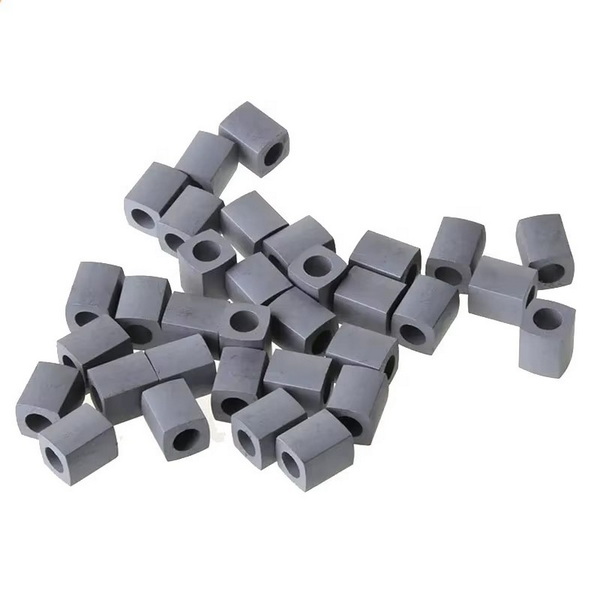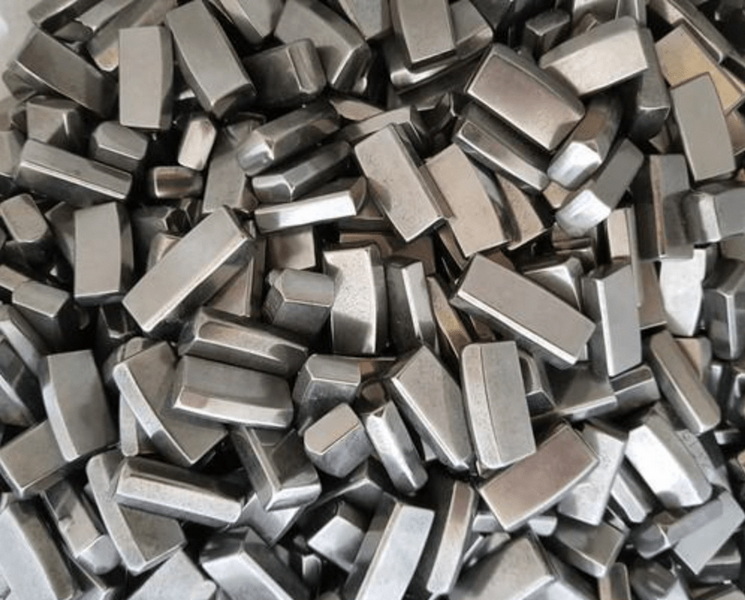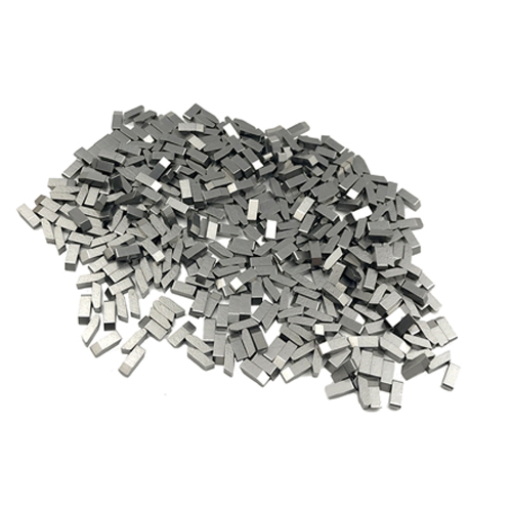Content Menu
● Understanding Tungsten Carbide
● Current Market Prices
● Factors Influencing the Value of Scrap Tungsten Carbide
● Recycling Processes for Tungsten Carbide
>> Chemical Recycling
>> Zinc Process
>> Molten Salt Dissolution Method
● Economic Impact of Tungsten Carbide Recycling
● Global Market Trends
● Additional Insights into Tungsten Carbide Applications
>> Mining Industry
>> Oil & Gas Sector
>> Manufacturing Sector
● Future Outlook for Tungsten Carbide Recycling
● Conclusion
● FAQ
>> 1. What is the average price of scrap tungsten carbide?
>> 2. How is tungsten carbide recycled?
>> 3. Why is tungsten carbide valuable?
>> 4. What affects the price of scrap tungsten carbide?
>> 5. Can I sell my tungsten carbide scrap?
● Citations:
Tungsten carbide is a highly sought-after material known for its exceptional hardness and durability. Commonly used in industrial applications, such as cutting tools and machinery components, the scrap generated from tungsten carbide products has significant value in the recycling market. This article will explore the worth of scrap tungsten carbide, factors influencing its price, recycling processes, and provide a comprehensive FAQ section to address common inquiries.

Understanding Tungsten Carbide
Tungsten carbide is a composite material made of tungsten and carbon atoms. It is renowned for its hardness, making it an ideal choice for tools and wear-resistant applications. The material can be found in various forms, including:
- Carbide Inserts: Used in machining operations.
- Carbide Buttons: Found in drilling applications.
- Carbide Rods: Used in manufacturing cutting tools.
The unique properties of tungsten carbide stem from its microstructure, which consists of hard tungsten carbide grains embedded in a softer cobalt matrix. This combination allows for excellent wear resistance while maintaining toughness, making it suitable for high-stress environments.
Current Market Prices
The price of scrap tungsten carbide fluctuates based on several factors, including market demand, quality of the material, and specific form. As of recent reports:
- Tungsten Carbide Scrap Price: Approximately ₹1,700 per kilogram.
- Carbide Inserts Scrap Price: Around ₹1,600 per kilogram.
- Carbide Buttons Scrap Price: About ₹1,800 per kilogram.
These prices can vary regionally and are subject to change based on market conditions. For instance, during periods of high demand for tungsten in various industries—such as aerospace or mining—the prices may rise significantly. Conversely, during economic downturns or when new materials emerge as alternatives, scrap prices may decline.
Factors Influencing the Value of Scrap Tungsten Carbide
Several factors play a crucial role in determining the worth of scrap tungsten carbide:
1. Quality of Material: Higher purity levels and less contamination lead to higher prices. Scrap that contains other metals or impurities may be valued less.
2. Form of Scrap: Different forms (inserts, rods, buttons) have varying values due to their manufacturing processes. For example, solid carbide rods may fetch a higher price than mixed carbide scrap due to their higher tungsten content.
3. Market Demand: Fluctuations in global demand for tungsten carbide affect pricing. Industries that rely heavily on cutting tools or wear-resistant materials often drive demand.
4. Recycling Efficiency: The methods used for recycling can impact the overall value extracted from scrap. Efficient recycling processes that recover more tungsten from scrap will enhance its value.
5. Geopolitical Factors: Tungsten is primarily mined in a few countries, including China and Russia. Political instability or changes in trade policies can affect supply chains and consequently influence prices.
Recycling Processes for Tungsten Carbide
Recycling tungsten carbide is essential for sustainability and cost-effectiveness. Various methods are employed to recover tungsten from scrap:
Chemical Recycling
Chemical recycling involves oxidizing tungsten carbide to convert it into soluble tungsten compounds. This process typically includes several steps:
1. Oxidation: The scrap is oxidized at high temperatures to convert the carbide into tungsten oxide.
2. Leaching: The tungsten oxide is then dissolved using acids or alkalis to separate it from impurities.
3. Precipitation: Tungsten is precipitated out of the solution as ammonium paratungstate (APT), which can be further processed into pure tungsten metal.
This method is efficient but requires careful handling of chemicals and environmental considerations.
Zinc Process
The zinc process involves melting tungsten carbide scrap with zinc at high temperatures. The zinc reacts with the tungsten carbide to form zinc tungstate, which can be further processed to recover pure tungsten powder. While effective, this method requires significant investment in equipment and safety measures due to the high temperatures involved.
Molten Salt Dissolution Method
An innovative approach gaining traction is the molten salt dissolution method. This technique utilizes molten salts to dissolve tungsten carbide at lower temperatures compared to traditional methods. The advantages include:
- Lower Energy Consumption: Reduced energy costs due to lower processing temperatures.
- Enhanced Recovery Rates: Higher recovery rates of pure tungsten from scrap.
- Reduced Environmental Impact: Less waste generated compared to other methods.
This method represents a promising advancement in the recycling of tungsten carbide and could become more prevalent as technology evolves.

Economic Impact of Tungsten Carbide Recycling
The recycling of tungsten carbide not only provides financial benefits but also contributes positively to environmental sustainability:
- Resource Conservation: Recycling reduces the need for virgin materials, conserving natural resources.
- Waste Reduction: Proper recycling minimizes waste sent to landfills.
- Lower Carbon Footprint: By reducing mining activities and energy consumption associated with production, recycling helps lower greenhouse gas emissions.
Furthermore, businesses that engage in recycling practices often benefit from cost savings associated with raw material procurement and waste management.
Global Market Trends
The global market for tungsten carbide is influenced by various trends:
1. Increased Demand for Cutting Tools: As manufacturing industries expand globally, the demand for high-performance cutting tools continues to rise.
2. Technological Advancements: Innovations in manufacturing processes are leading to more efficient use of materials and increased demand for recycled products.
3. Sustainability Initiatives: Companies are increasingly adopting sustainable practices, driving interest in recycled materials like tungsten carbide.
4. Regulatory Changes: Stricter environmental regulations are encouraging industries to seek recycled materials over newly mined ones.
Additional Insights into Tungsten Carbide Applications
Tungsten carbide's applications extend beyond just cutting tools; it plays a crucial role across various industries:
Mining Industry
In mining operations, tools made from tungsten carbide are used extensively due to their ability to withstand extreme conditions such as high pressure and abrasive environments. Drill bits made from this material enhance drilling efficiency while minimizing downtime caused by tool wear.
Oil & Gas Sector
The oil and gas industry relies on durable equipment capable of enduring harsh environments found during drilling operations deep beneath the earth's surface or ocean floors. Tungsten carbide components are commonly used in drill bits and valves due to their strength and resistance to corrosion.
Manufacturing Sector
In manufacturing settings where precision machining is essential—such as aerospace or automotive industries—tungsten carbide inserts are favored for their ability to maintain sharpness over extended periods without degradation in performance.
Future Outlook for Tungsten Carbide Recycling
As global awareness regarding sustainability increases alongside technological advancements within recycling processes themselves—such as improved sorting technologies—the future looks bright for both new production methods utilizing recycled materials along with enhanced recovery techniques aimed at maximizing yield from existing waste streams containing valuable metals like those found within spent tool components made primarily from this remarkable compound known as “tungsten” combined with carbon atoms forming “carbides.”
Conclusion
Scrap tungsten carbide holds substantial value in the recycling market due to its desirable properties and applications. Understanding the current market prices and factors influencing these prices can help businesses make informed decisions regarding their scrap materials. With ongoing advancements in recycling technologies, the future of tungsten carbide recycling looks promising.
As industries continue to prioritize sustainability and resource conservation, the importance of effective recycling practices will only grow. By recognizing the worth of scrap tungsten carbide and investing in efficient recycling methods, businesses can contribute positively to both their bottom line and the environment.

FAQ
1. What is the average price of scrap tungsten carbide?
The average price is approximately ₹1,700 per kilogram, but it can vary based on quality and form.
2. How is tungsten carbide recycled?
Tungsten carbide is recycled through methods such as chemical processes, zinc melting, and molten salt dissolution.
3. Why is tungsten carbide valuable?
Its exceptional hardness and resistance to wear make it highly sought after in industrial applications.
4. What affects the price of scrap tungsten carbide?
Factors include material quality, form of scrap, market demand, and recycling efficiency.
5. Can I sell my tungsten carbide scrap?
Yes, many buyers are interested in purchasing scrap tungsten carbide for recycling purposes.
Citations:
[1] https://carbidescrapbuyers.com/scrap/
[2] https://patents.google.com/patent/EP2521799A1/en
[3] https://www.indiamart.com/proddetail/tungsten-carbide-scrap-16359216648.html
[4] https://www.allied-material.co.jp/en/research-development/tungsten_recycle.html
[5] https://www.ebay.co.uk/itm/274834074105
[6] https://www.itia.info/wp-content/uploads/2023/07/ITIA_Newsletter_2019_08.pdf
[7] https://www.alibaba.com/showroom/scrap-tungsten-carbide-price.html
[8] https://www.linkedin.com/pulse/how-recycle-tungsten-carbide-yeyi-hardfacing-material
[9] https://rrcarbide.com/prices/
















